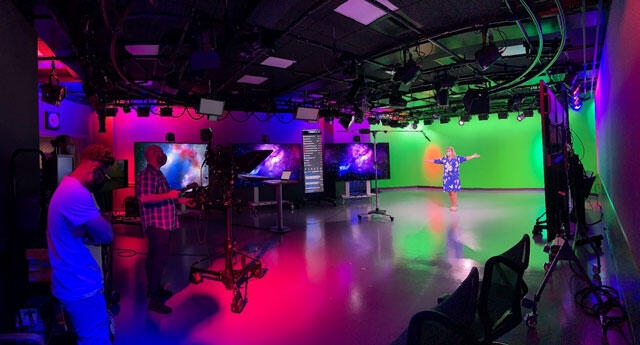In the ever-evolving landscape of entertainment, the intersection of technology and creativity has given rise to a dynamic era where traditional boundaries are being redefined. The phrase “Lights, Camera, Interaction” encapsulates the essence of this transformation, signifying a departure from passive consumption to active engagement. This article explores how technology has become a catalyst for innovation, shaping the way we experience and interact with entertainment across various mediums.
Virtual Reality (VR) and Augmented Reality (AR):
At the forefront of the technological revolution in entertainment are virtual reality (VR) and augmented reality (AR). VR plunges users into immersive, three-dimensional worlds, offering an unparalleled level of engagement. From virtual tours of historical landmarks to interactive storytelling experiences, VR has transcended the confines of traditional mediums, allowing users to be active participants in the narrative.
On the other hand, AR overlays digital elements onto the real world, enhancing our perception and interaction with the environment. Popularized by mobile applications like Pokémon Go, AR has found its way into entertainment, transforming everyday spaces into interactive canvases for storytelling and gaming. The marriage of the physical and digital realms opens up new avenues for creative expression and audience interaction.
Interactive Cinema and Choose-Your-Own-Adventure:
Traditional cinema is undergoing a metamorphosis with the advent of interactive storytelling. Viewers are no longer passive spectators but active participants in the narrative. Choose-your-own-adventure formats, popularized by streaming platforms, empower audiences to make decisions that shape the storyline. This level of interactivity blurs the lines between cinema and gaming, creating a personalized and engaging viewing experience.
Interactive cinema extends beyond the digital realm, with live performances incorporating audience participation. The fusion of technology and live theater allows for real-time interaction, enabling audiences to influence the plot or engage with performers through various digital channels. This innovative approach transforms the theatrical experience into a dynamic and participatory event.
Streaming Services and Personalized Content:
The rise of streaming services has fundamentally altered how we consume entertainment. Platforms like Netflix, Hulu, and Amazon Prime Video leverage advanced algorithms to analyze user preferences, offering personalized recommendations and curated content. The marriage of technology and data analytics ensures that viewers receive content tailored to their tastes, creating a more immersive and enjoyable viewing experience.
Furthermore, streaming services have become a breeding ground for original content, allowing creators to experiment with unconventional storytelling formats and push the boundaries of traditional genres. From interactive documentaries to virtual concerts, these platforms enable content creators to engage audiences in novel and unexpected ways.
Gaming and Esports:
The gaming industry stands as a testament to the transformative power of technology in entertainment. Video games have evolved from pixelated adventures to cinematic, narrative-driven experiences that rival Hollywood productions. The interactive nature of gaming immerses players in dynamic, virtual worlds where their choices and actions impact the unfolding story.
Esports, competitive gaming at a professional level, has emerged as a global phenomenon. Technological advancements in graphics, connectivity, and virtual reality have elevated gaming from a solitary pastime to a communal and spectator sport. Live-streamed tournaments attract millions of viewers, creating a new form of entertainment that blurs the lines between player and audience.
Social Media and Fan Engagement:
The pervasive influence of technology extends to social media platforms, where fan engagement plays a crucial role in shaping the entertainment landscape. Celebrities, filmmakers, and content creators leverage social media to connect directly with their audience, providing behind-the-scenes glimpses, conducting Q&A sessions, and even incorporating fan suggestions into their work.
Social media has also become a platform for fan communities to flourish, fostering a sense of belonging and shared enthusiasm. The ability to directly interact with creators and fellow fans enhances the overall entertainment experience, creating a symbiotic relationship between content producers and their audience.
The Future of Interaction in Entertainment:
As technology continues to advance, the intersection of technology and entertainment is poised for further innovation. Emerging technologies such as artificial intelligence, extended reality (XR), and 5G connectivity hold the potential to reshape how we engage with content. AI-driven storytelling, hyper-realistic virtual environments, and seamless interactivity are on the horizon, promising a future where the boundaries between the virtual and the real are increasingly blurred.
Conclusion:
“Lights, Camera, Interaction” encapsulates a paradigm shift in the entertainment industry, where technology serves as a catalyst for dynamic and immersive experiences. From virtual reality to interactive cinema, the intersection of technology and entertainment is redefining traditional forms and creating novel, engaging narratives. As we navigate this era of innovation, the possibilities for interaction in entertainment are boundless, promising a future where audiences become active participants in the stories they consume.

